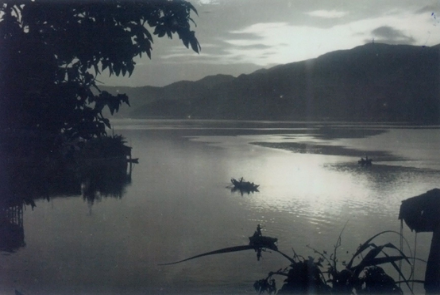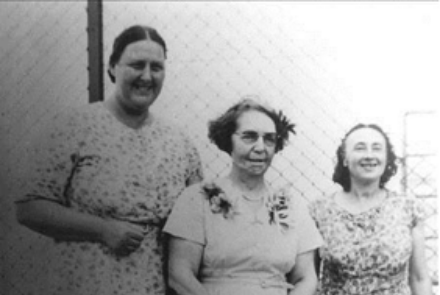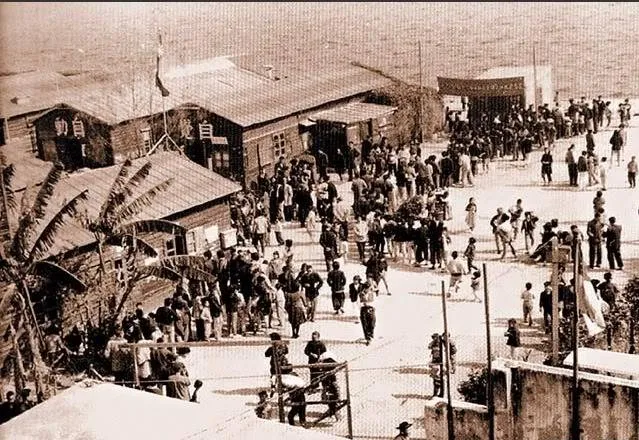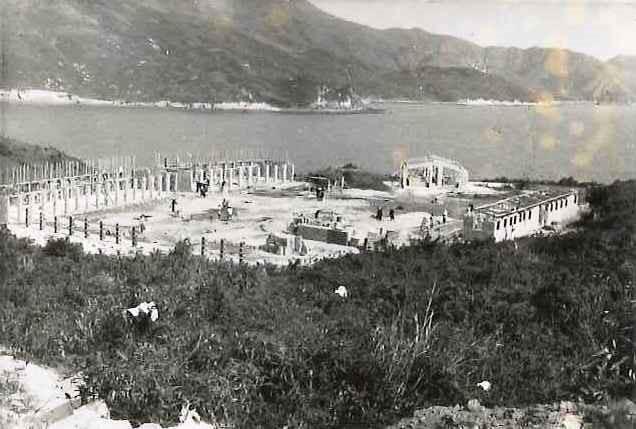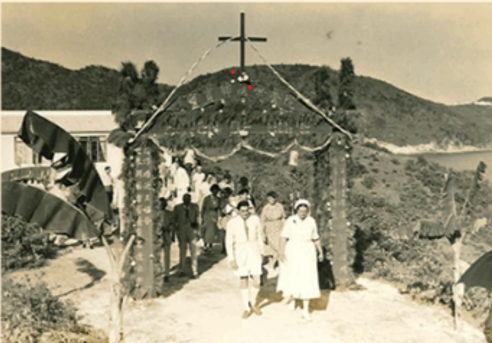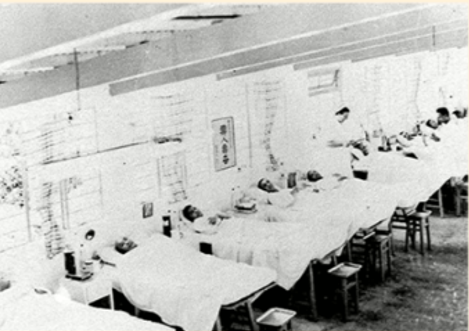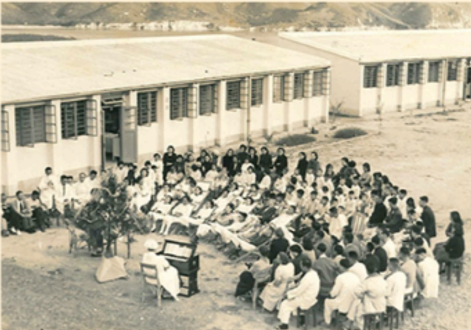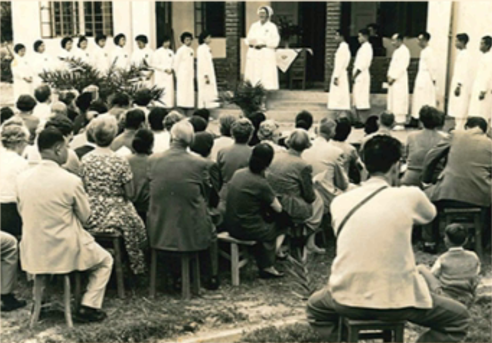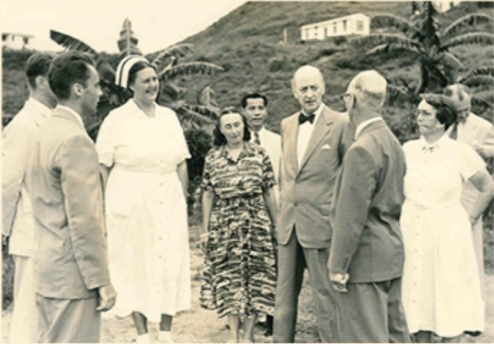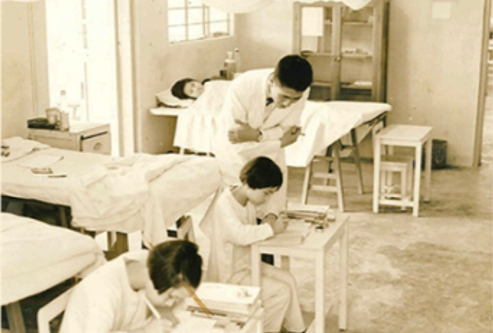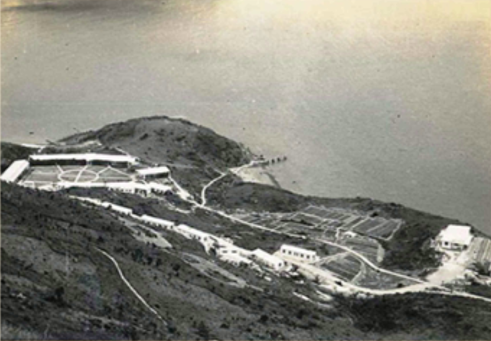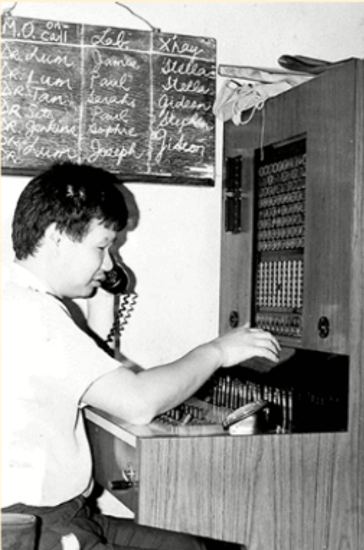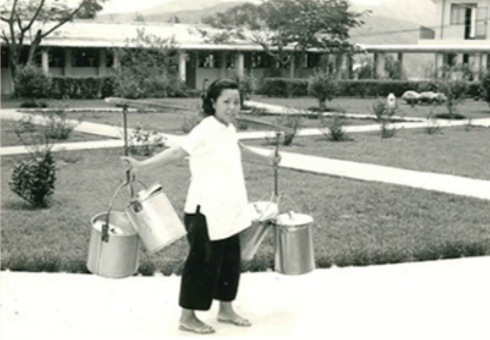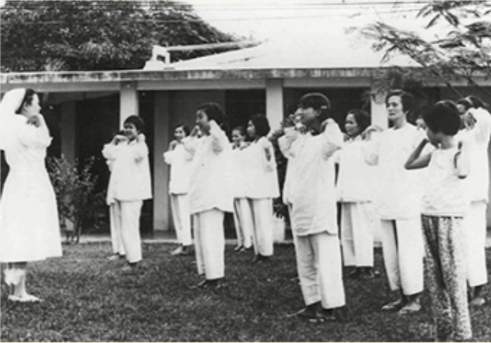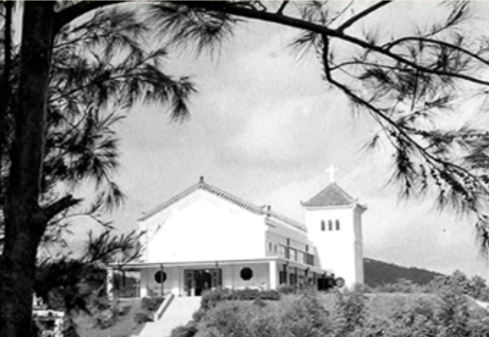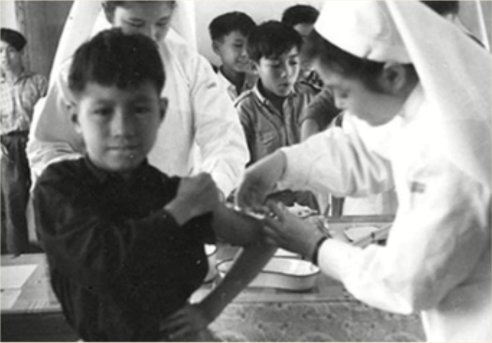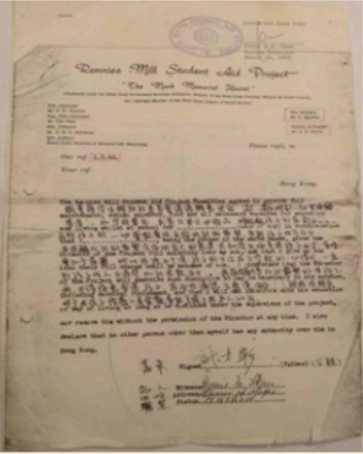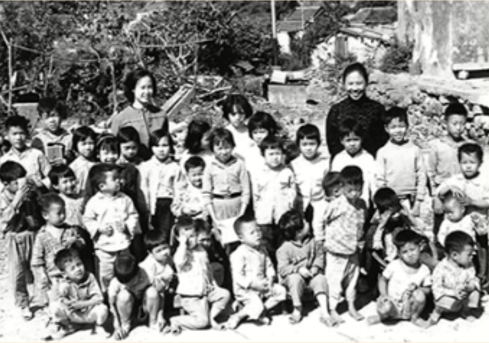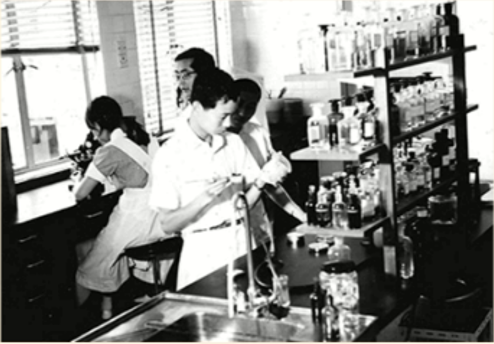
50s-60s
1950s
From Rennie's Mill to Tiu Keng Leng
In the early 1900s, a Canadian businessman named A.H. Rennie purchased a plot of barren land from the Hong Kong Government. He built and ran a flour mill there, yet unfortunately the business failed and he later committed suicide. The British thus named the place “Rennie's Mill” whereas the Chinese gave it a less than auspicious name “Tiu Keng Leng” (means Hanging (neck) Ridge, referring to Rennie’s suicide).
In 1950, The colonial government decided to resettle the refugees in this remote place, and renamed the place in Chinese with similar sounding characters carrying more positive connotations.
References: Haven of Hope (in Chinese), The Forgotten People on the Barren Upland (in Chinese)
Photo:by Mr Edwad Kai
1950s
Refugee camps of the 50's in Rennie's Mill
Between 26-28 June 1950, around 7,000 refugees were transferred to Junk Bay (Tiu Keng Leng) Refugee Camp in 3 batches. After that, around 10,000 refugees arrived on foot. With the influx of refugees, the entire population increased sharply from 7,000 to more than 20,000.
References: Haven of Hope (in Chinese)
Year 1953
Miss Helen Wilson (Scotland) and Sister Annie Skau (Norway)
A number of foreign missionaries arrived in the early 1950s and founded the Rennie's Mil Camp Church Clinic Committee (the forerunner of Haven of Hope Christian Service). They offered medical service to the refugees in a simple“shed clinic”. Medications were mostly donated by churches around the world.
Miss Helen Wilson was one of these missionaries who devoted themselves to refugee service in Rennie's Mill. Later, she invited Sister Annie Skau to join them in 1953.
References: Haven of Hope (in Chinese), The Forgotten People on the Barren Upland (in Chinese), On the Barren Upland
Year 1953
Sister Annie Skau was invited to serve in Rennie's Mill
Sister Annie Skau was a practising nurse and she arrived in Hong Kong with the mission to serve the God and refugees.
Norwegians are generally much taller than the local Chinese. Sister Annie was mostly seen in a nurse gown that measured 115cm long and 60cm wide, which was quite an “exceptional” scene in Rennie’s Mill.
Year 1954
Ida, the typhoon signal No.9
Ida, the Typhoon Signal No.9 that killed 5 people in Hong Kong, has completely destroyed the Tuberculosis Ward located next to the seaside.
March 26, 1955
The foundation stone laying ceremony of Haven of Hope
The destruction caused by Typhoon Ida did not, in any way, affect the enthusiasm and confidence of Sister Annie Skau and members of Rennie’s Mill Camp Church Clinic Committee. In November 1954, they decided to build a tuberculosis sanatorium for better care of patients. The missionaries decided to set it up in Yuen Chau, somewhere 1km away from Rennie’s Mill.
The Foundation Stone Laying Ceremony of Haven of Hope was hosted by Sister Annie Skau on March 26.
Year 1955
Haven of Hope under construction
This is how Haven of Hope Terrace looked like at its very beginning. It was a barren upland as shown in the photo.
Year 1955
The opening ceremony of Haven of Hope Tuberculosis Sanatorium
Haven of Hope Tuberculosis Sanatorium was officially opened on October 22, 1955. The Chinese name, “靈實”, means “Spiritual fruit”, whereas the English name refers to “Haven of Hope”.
Year 1955
Copper Handbell – the communication tool
Before the era of communication technology, Sister Annie relied on this copper handbell and rang it at the lawn to get the colleagues’ attention.
Year 1955
The male Tuberculosis ward in the early days
The Male Tuberculosis Ward was simple and crude in its early days.
Year 1955
The first Christmas
Sister Annie and colleagues spent the first Christmas at Haven of Hope Tuberculosis Sanatorium, together with the patients.
Year 1956
The opening of Po Lam Road
The Haven of Hope Tuberculosis Sanatorium was built on the barren land. Those colleagues who needed to head for Kowloon would have to catch a Sampan at Yuen Chau pier to Hang Hau before taking the stairs up to Clear Water Bay, where could take public transport to the urban area. Rev. Whitener, witnessed such inconvenience, recruited a good number of workers to build a 10km road from Tseung Kwun O to Po Lam Road (in Sai Kung), which links up the latter with Anderson Road in Ngau Chi Wan. Po Lam Road was named after Rev. Whitener’s spouse, Mrs. Barbara Whitener (alias Wai Po Lam in Cantonese). The time needed for commuting between Kowloon and Rennie’s Mill, since then, had been reduced to only one hour. Sister Annie Skau, together with the nurses and other colleagues, attending this Opening Ceremony.
References: The Forgotten People on the Barren Upland (in Chinese), On the Barren Upland
Year 1957
The opening ceremony of X-Ray Room, Treatment Room and the Laboratory
Sister Annie Skau and colleagues kept praying and got all the provisions and support that they need from God. In 1956, Haven of Hope built a X-ray room, a treatment room, a laboratory, a warehouse, the nurse dormitory etc. It turned out that God’s provision had exceeded what the team had prayed for!
Reference: On the Barren Upland
Year 1957
Sir Alexander Graham's Visit to
Haven of Hope
Sir Alexander Graham, the former Hong Kong Governor, visited Haven of Hope and learned about the institution’s services and development.
Year 1957
Children's ward at Haven of Hope
Mr Ho was teaching kids in the children’s ward in front of their beds.
Year 1957
Haven of Hope Christmas party, 1957
As clearly shown in the photo, there had been great improvement at Haven of Hope in 1957 as compared to its condition back in two years ago.
Year 1958
Full view of Haven of Hope
Thanks to God’s leadership, donations by churches around the world, as well as local government support, Haven of Hope was on a steady path of development. Wards at Haven of Hope were named after different types of spiritual fruits: Joy, Peace, Patience, Kindness, Goodness, Faithfulness, Gentleness and Self-Control. Five new wards were later built to serve.
Reference: On the Barren Upland
Year 1959
The Nursing students were reciting Nightingale Pledge at graduation
"I solemnly pledge myself before God and in the presence of this assembly, to pass my life in purity and to practice my profession faithfully. I will abstain from whatever is deleterious and mischievous, and will not take or knowingly administer any harmful drug. I will do all in my power to maintain and elevate the standard of my profession, and will hold in confidence all personal matters committed to my keeping and all family affairs coming to my knowledge in the practice of my calling. With loyalty will I endeavor to aid the physician in his work, and devote myself to the welfare of those committed to my care."
—— The Florence Nightingale Pledge
1960s
At the children's ward
Compared to the condition in 1957, much improvement had been made on the facilities in the Children’s Ward in 1959 as shown in the photo.
1960s
Farming in Rennie's Mill
With the 29 acres of barren land donated by the Hong Kong Government, the Haven of Hope Farm became one of the largest farms around the Rennie’s Mill. It was established for enhancing the physical recovery of those undergoing rehabilitation as well as providing fresh vegetables and meat for Haven of Hope.
Reference: A Report on the Rennie’s Mill Camp in Hong Kong
1960s
An old telephone
This old telephone was visually-impaired friendly.
1960s
Colleagues at work
Janitors carried hot water every day for patients’ consumption and baths.
1960s
The cooking chef
The chef was busy preparing food for the patients and janitors.
1960s
Daily routine of the nurse
The nurse was leading patients for exercises in the rehabilitation session.
Year 1961
Chapel, Haven of Hope Hospital
The Chapel was finally completed in the winter of 1961.
Year 1962
Haven of Hope Christmas card
It said, on this Haven of Hope Christmas card, “Christmas Joy. The Savior has come”.
Year 1962
Students being vaccinated
The Rennie’s Mill Clinic offered vaccinations for local students.
Year 1962
Helping the suffering children
Referred by Sister Annie Skau, Mr Edward Kai, the author of The Forgotten People on the Barren Upland (in Chinese), received funding from the Rennie’s Mill Student Aid Project Committee for his education and all the necessary expenses. This valuable opportunity has changed the life of Mr. Kai.
The document showed the signature of Sister Annie as Witness.
Year 1963
Haven of Hope taking care of children of Tuberculosis patients
The children were singing joyfully outside the Kindness Ward.
Year 1964
Evangelical choir of Haven of Hope
Haven of Hope founded the Evangelical Choir in 1964. They set up the Rural Sunday School and spread the Good News of Jesus Christ in Hang Hau, Tai Po Tsai, Mau Wu Tsai, Ma Yau Tong, Yau Yue Wan, Junk Bay etc.
Year 1968
Official opening of the Sunnyside Preventorium
The Sunnyside Preventorium was set up to take care of the children in need. As the building and construction costs were all covered by donations from the Norwegian Refugee Council, the Consult of Norway in Hong Kong was invited to host the Opening Ceremony.
Reference: On the Barren Upland
Year 1969
Laboratory at Haven of Hope
This was how the laboratory looked like back in the 60s.

